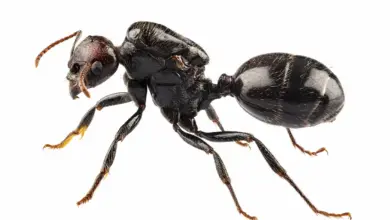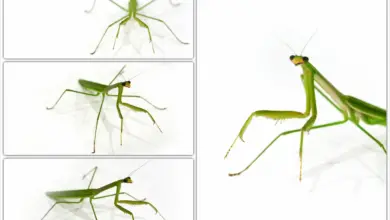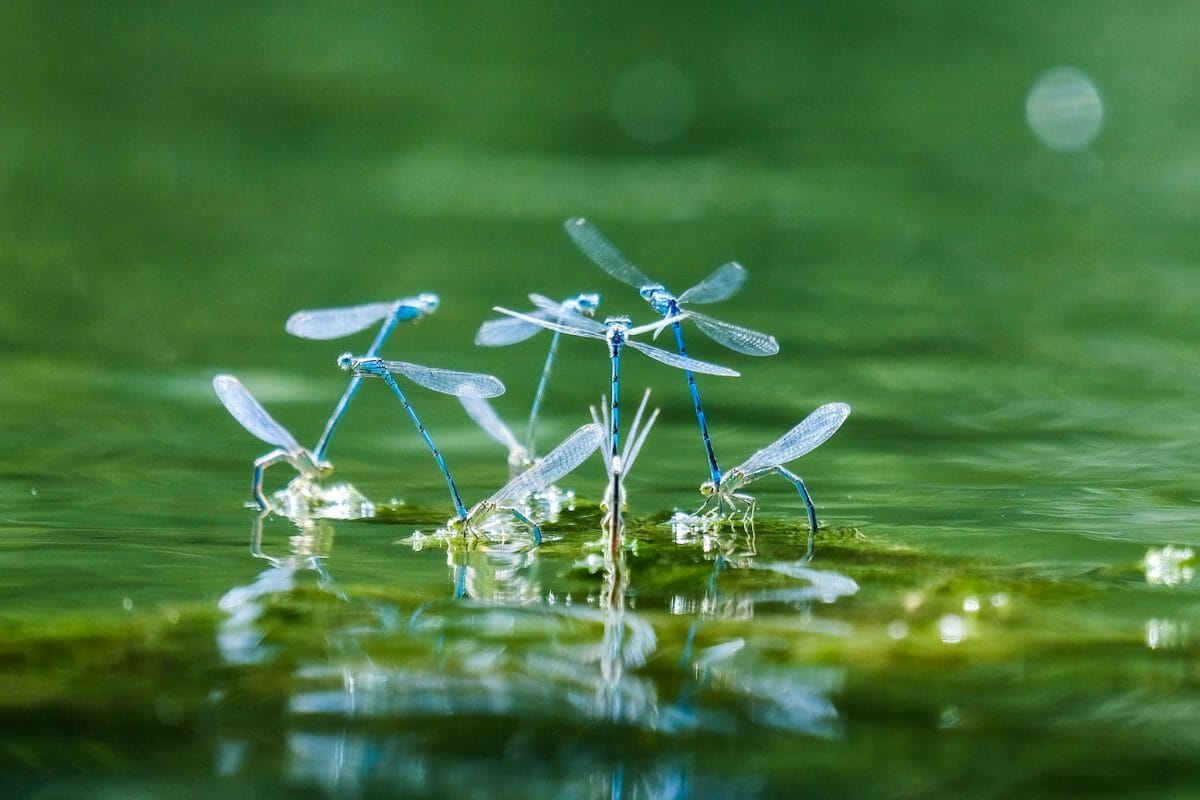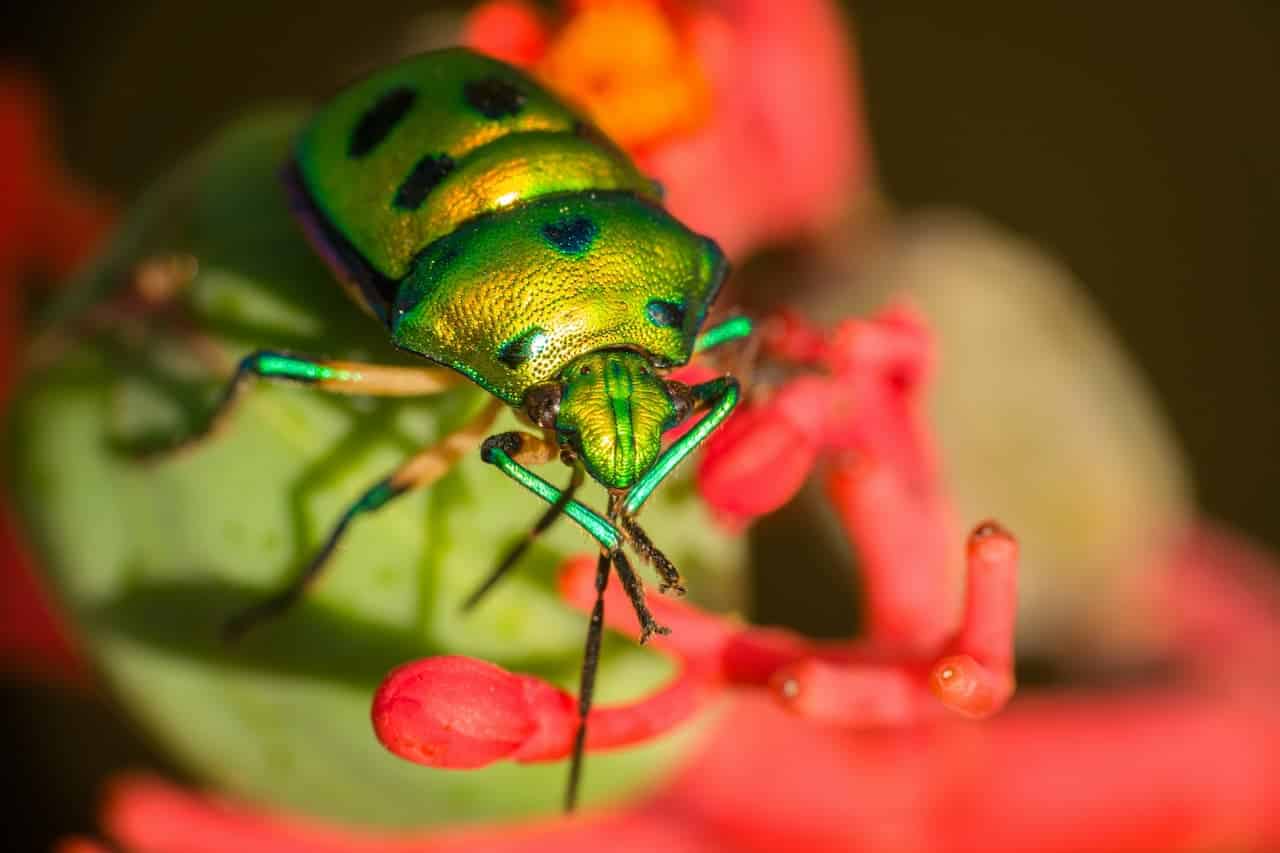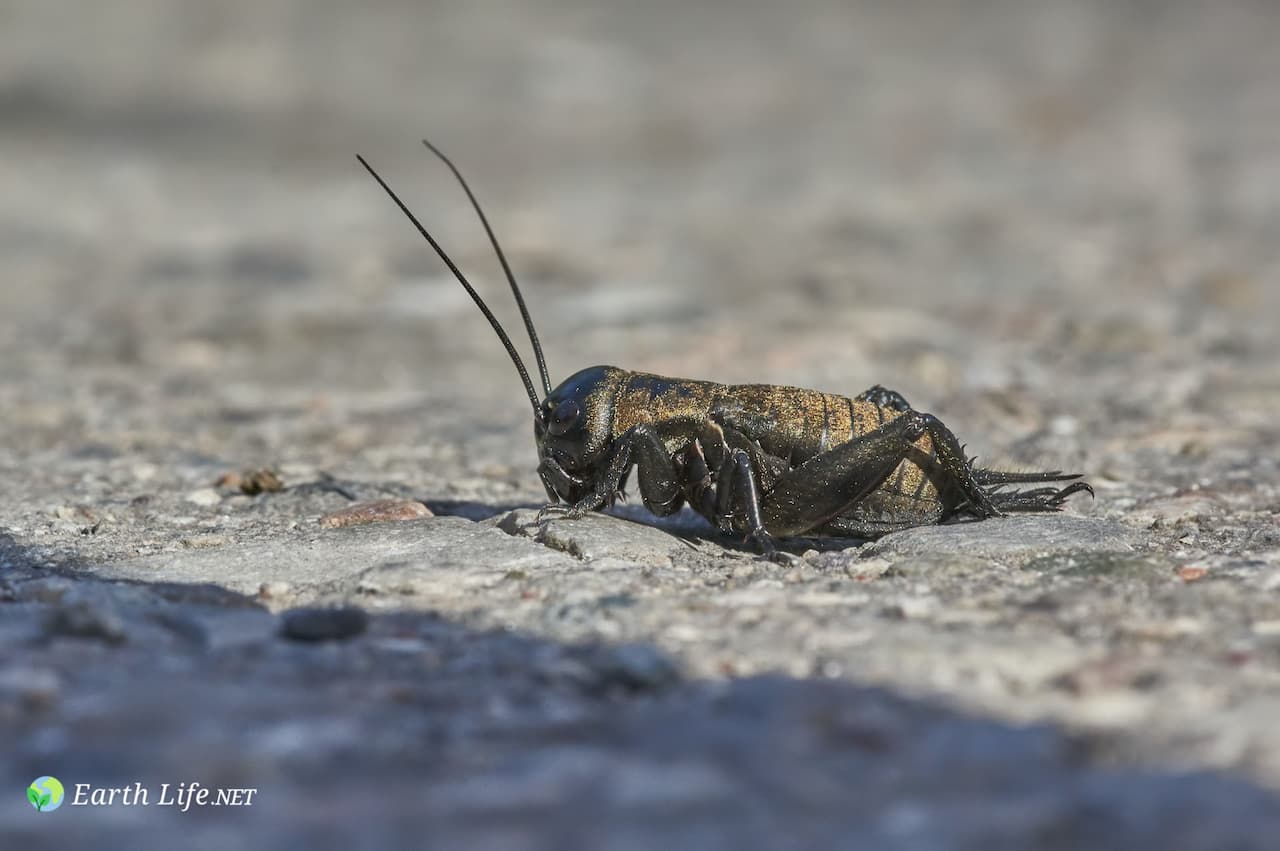Do Insects Have Hearts: A Bug’s Gotta Have Heart
[modified-date]
[social-share]
Although it is unlikely you will ever hear an insect’s heartbeat, it doesn’t mean that they are heartless creatures. Let’s look under that exoskeleton to discover the invertebrate circulatory system and the secrets of the insect heart – not in a romantic way, though!
Do Insects Have Hearts?
Insects most definitely have hearts. Although an insect heart looks radically different than a mammalian one, it still has the same function – to pump the invertebrate version of blood called hemolymph through the body, supplying the organs with fluids and nutrients.
Do Insects Have A Circulatory System?
First of all, hearts exist to pump the nutrient and organ-nourishing bodily fluid and bring it to organs. In vertebrates, it is called blood and is colored red due to the presence of red blood cells and the pigment hemoglobin that binds oxygen to carry it to vertebrate cells.
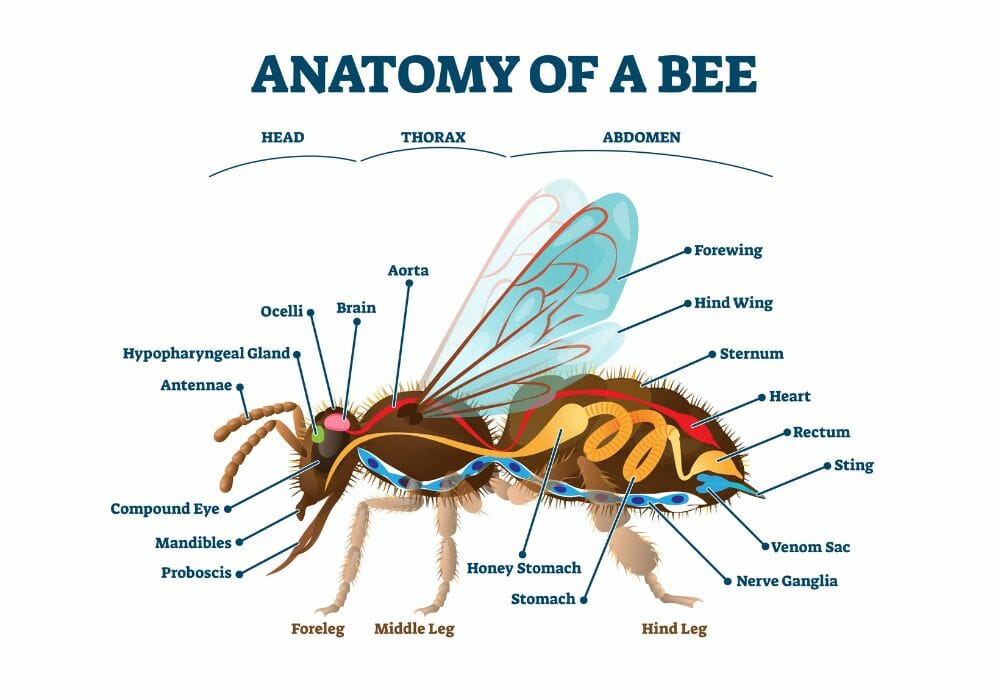
Invertebrates don’t have blood but another liquid that fulfills a similar purpose. Hemolymph is an insect blood equivalent, a watery fluid that carries essential nutrients, substances, and cells.
The blood and hemolymph need a circulatory system to reach the organs they “feed.”
There is another stark difference between a chordate and an invertebrate circulatory system.
- Vertebrates, humans included, have a closed circulatory system. The blood flows to a system of blood vessels connected to organs.
- Invertebrates, including insects, have an open circulatory system. The hemolymph flows through the body freely.
Unlike the bright red vertebrate hemoglobin, the pigments in the hemolymph are pretty dull. That’s why the “insect blood” is so pale – whitish, yellowish, or greenish. You must have witnessed this if you’ve ever seen a squashed insect.
What is hemolymph made of?
Hemolymph is a heterogenous bodily fluid consisting primarily of water. However, to fulfill its purpose, it has to carry other components, such as:
- Ions and salts
- Amino acids
- Carbohydrates
- Lipids
- Hormones
- Glycerol
- Cells and scarce pigments
How Does An Insect Heart Work?
An insect heart is a part of the internal tube-shaped structure called the dorsal vessel. “Dorsal” means “on the upper side” or on the back,” – thus, you’re probably guessing that this organ is found on the insect’s backside.
The dorsal vessel is the main component of the insect circulatory system. For something that important, it has a surprisingly fragile, membranous form. It scratches through the thorax (“chest”) and the abdomen (“belly”) and collects the hemolymph from the abdomen (you’ll see why in a minute), and drives it towards the head.
The insect heart is an abdominal part of the dorsal vessel. It is divided into chambers, and each abdominal segment contains one. Similar to our hearts, the chambers are separated by valves called ostia that ensure that the hemolymph flows in one direction.
Insect And Human Hearts Have A Similar Genetic Background
Due to the obvious difference between an invertebrate and a vertebrate heart, it feels strange to learn that sets of very similar genes govern their development. Research on their origins is quite an exciting scientific case.
Do Insects Have Heartbeats?
Like blood, the hemolymph won’t flow around the body as of itself. That’s why the insect heart has to beat, just like our hearts do.
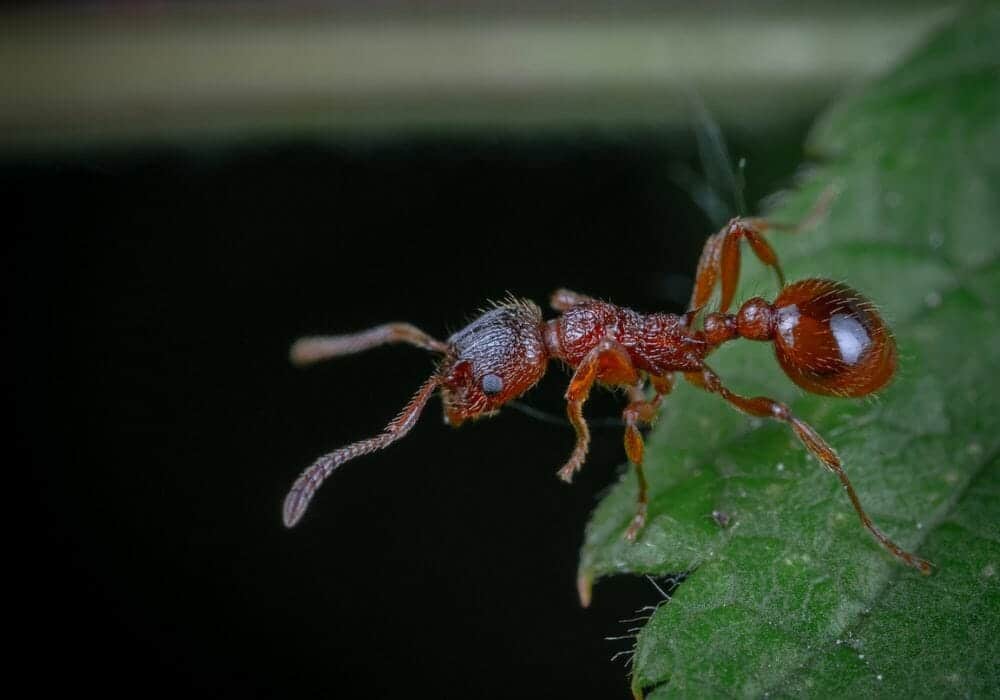
The heart chambers have a pair of contracting muscles on the side walls. Their contractions force the hemolymph to move through the chambers. When muscles relax, the valves open, allowing the hemolymph from the body cavity to enter the heart.
Muscles contract, muscles relax – and we have ourselves a bug heartbeat.
Where there’s a heartbeat, there’s a heart rate, too – the number of times that heart contracts per minute. Insect heart rate varies from species to species, from 30 to 200 bpm (beats per minute).
However, in all insects, the heart rate falls with temperature drops and rises when it gets hotter – following the pattern of insect activity in different weather conditions.
Insects’ hearts also seem to react to their environment in another way – in response to environmental stress. According to research, monarch butterfly caterpillars’ hearts beat faster when exposed to traffic noise. On the outside, the poor things seem to flinch as a car passes by.
Related articles:
- Bug vs Insect
- Do Insects Have A Nervous System: Do Bugs Feel Pain?
- Insects with stingers that fly
- What stages do insects have that mammals don’t
- Do insects have tongues?
- Do insects have tails?
- How far can insects see?
What Is The Function Of The Auxiliary Hearts In Insects?
The dorsal vessel pumps and the internal pressure helps distribute hemolymph to internal organs. However, there is an issue with the body appendages – legs, antennae, elongated mouthparts, and insect wings – that are hard to reach for this free-flow system.
Despite the fact they’re distant, they too require hemolymph supply – and here is where auxiliary hearts come into play.
What Are Auxiliary Hearts?
Auxilary hearts are additional pulsatory organs to the central heart that help pump the hemolymph into the appendages.
The functional and anatomical diversity of auxiliary insect hearts is impressive – and it is no wonder when you consider the differences in insect body designs!
What About Oxygen?
I mentioned that the red pigment hemoglobin in vertebrate blood binds oxygen. That way, it helps red blood cells carry it through the body to all cells.
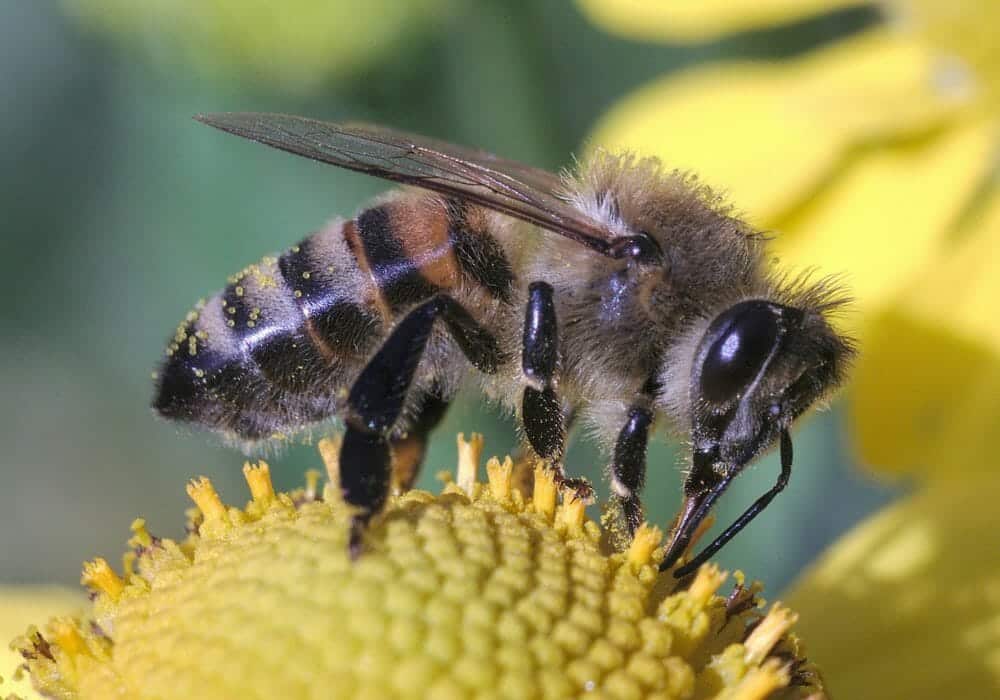
The insect hemolymph doesn’t have hemoglobin. So, what about the oxygen supply?
If you look at our faces, we have only two nostrils that carry the air to our lungs, where the oxygen is extracted and other gasses are exhaled. Alternatively, we can breathe only through our mouths with a tracheal opening in the back.
If you were an insect, you would have nostrils all over your body!
The tracheal tube system runs through an insect body to supply tissues with oxygen – thus, that is not the task of the hemolymph.
The “nostrils” – small openings called spiracles – line insects’ skin and exoskeleton and open to get the air inside the tracheal tubes.
In Conclusion, On A Creeping Heart
For all who have been wondering do insects have hearts, this article has hopefully shown you that our six-legged creepy-crawly neighbors really have hearts.
The elongated insect heart – a part of the central circulatory structure called a dorsal vessel – successfully beats and helps bathe the internal organs in hemolymph, an invertebrate version of blood.
Despite the lack of circulatory vessels in an open circulatory system, the essential amino acids, salts, nutrients, and metabolism byproducts successfully circulate beneath that exoskeleton.
While they might not be the most romantic creatures in the world, insects also react to their environment with their hearts! Although we are starkly different creatures, we can’t help but empathize when we learn that an insect’s heart beats faster when the critter is stressed. If you agree, raise a tarsus… I mean, hand!

Katarina Samurovic is an environmental analyst by education and a freelance scientific writer by choice and passion. She specializes in conservation biology, biodiversity, insect ecology, and trees.
Disclaimer
Earthlife.net does not provide medical advice. We do our best to help users understand the science behind living beings; however, the content in the articles and on the website is not intended to substitute for consultation with a qualified expert. By interacting with the website and/or our email service, you agree to our disclaimer. Remember that you must consult a specialist before using any of the products or advice on the web.

